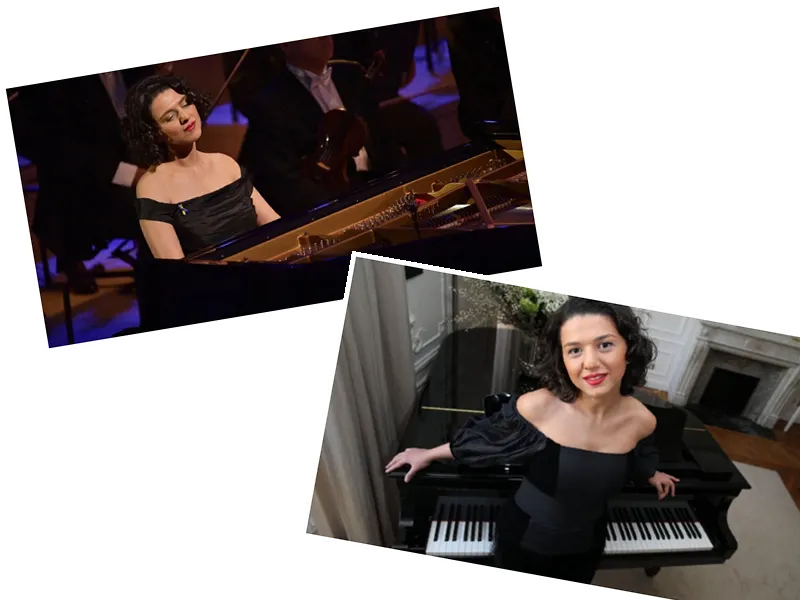A few days before the Olympic Games, Paris is upside down. Bridges or streets closed for the opening ceremony, areas under control around the Olympic sites... Crossing the capital is sometimes like orienteering. Pianist Khatia Buniatishvili experienced this on Sunday when to these embarrassments were added the restrictions concerning the military parade and the festivities of the national day. She found herself unable to reach the square in front of the Town Hall, where she was to perform as part of the classical concert on July 14.
She recounted - and filmed - her crazy race on social networks. “Before entering the stage of the Concert de Paris, 20 minutes of marathon just before Debussy to escape the endless traffic jams of the city ,” she jokes on The 37-year-old is filmed walking the streets of the capital in her silver evening dress, a pair of shoes that are too big on her feet. “This nice gentleman lent me his shoes, walking in socks himself, and saved me from missing my performance ,” says the Franco-Georgian artist.
“We’re late, we’re stuck, the badge doesn’t work,” she tells the camera. We got out of the car and Laurent lent me his shoes.” Despite this slight setback, the virtuoso finally arrived on time. We see her go on stage - in heels this time -, meeting Renaud Capuçon. A few minutes later, she played Clair de lune, from La Suite bergamesque, composed by Claude Debussy at the end of the 19th century. It was “not very glamorous” but “definitely Olympic”, concluded Khatia Buniatishvili in the caption of her video.
A city cut in two on July 26. The organization of the Paris Olympic Games in the heart of the city, in public spaces and in sites as central as the Concorde, the Champ-de-Mars, the Grand-Palais or the Invalides (instead of the stadiums and traditional competition facilities) was only possible at the cost of significant traffic restrictions and demarcation of zones controlled by the police. Since July 18, these difficulties have been accentuated with the arrangements put in place for the opening ceremony, Friday July 26, which must take place on the Seine, from the National Library to the Eiffel Tower, a large half of the river. and its surroundings in the capital.
Nearly half of the city's 37 bridges are closed or restricted to traffic due to the installation of stands for the expected 350,000 spectators. The same is true for most docks. To access certain areas, whether you live or work there, a QR pass system has been put in place which allows the identity of visitors to be checked. The climax is expected on Friday the 26th, a few hours before the ceremony, when nearly a fifth of the city and the entire area around the Seine (from Charenton-le-Pont to Issy-les-Moulineaux) will pass into the red zone (traffic with authorization) or black zone (traffic prohibited except for organizers and spectators with tickets).
The city will be, for a day, cut in two, along an axis which goes from the Bois de Vincennes to the Bois de Boulogne. If during the Olympic fortnight, the measures will become less restrictive outside the competition sites and their surroundings, it will nevertheless be necessary to consult the schedule of events because several of them will take place in the city. This is for example the case for road cycling events (July 27, August 3 and 4) or marathons (August 10 and 11).






